Ending hunger
In numbers
- 42.3 million people in 'emergency' or worse levels of hunger
- 45 countries where these people live
- 150 million people WFP aims to reach in 2024
These are times of extreme jeopardy for millions of people struggling to feed their families. Across the globe, as many as 309 million people are facing acute levels of food insecurity in 2024 in the 72 countries with WFP operations and where data is available. The World Food Programme (WFP) supports countries' efforts to reach zero hunger by 2030, a target agreed by governments under the Sustainable Development Agenda and specifically Sustainable Development Goal 2.
What are the causes of hunger?
Conflict is the primary driver of today's hunger crisis. Conflict drives people away from their land and livelihoods, disrupts markets, ratchets up food prices and destroys critical developmental gains. Its devastating impact can be seen across hunger hotspots including Palestine, Sudan, Syria, Yemen and Ukraine.
The climate emergency is also one of the leading causes of hunger. Extremes including floods, droughts and heatwaves destroy lives, livelihoods and crops, while degrading soils and damaging infrastructure and agricultural assets.
Inequality is another key factor. When food prices rise due to struggling economies and external factors – for example the war in Ukraine – the poorest people struggle even more to put nutritious food on the table. The worst affected are children, women and girls, with long-term consequences for their physical and mental development. Among other factors, around 30 per cent of the food produced worldwide is lost or wasted every year. On the production side, lack of access to technology and markets means many farmers are forced to watch their crops rot in fields.
What are the effects of hunger?
Diets poor in vitamins, minerals and other nutrients affect the health and life prospects of millions of people. Malnourished children are up to 12 times more likely to die than a healthy child and, for those who survive, malnutrition can impair their health and development for life. Malnutrition slows economic growth and perpetuates poverty, with the impact on children's education and workforce skills having dire consequences for countries' human capital and future development.
As part of a vicious cycle, hunger can also fuel conflict as well as vice-versa. People forced from their land may be vying with others for scarce resources, especially in areas where poverty and inequality are already present.
When does hunger become famine?
Famine is the most severe form of food insecurity. It can be declared when malnutrition is widespread, and people have started dying of starvation through lack of access to sufficient, nutritious food. Among the most vulnerable groups are internally displaced people and refugees caught between the frontlines of hunger, many of whom are totally dependent on food assistance for their survival.
Definition of famine
- 2 people per 10,000 die from starvation, or disease + malnutrition
- 20% of households face extreme food shortages
- 30% of children suffer from acute malnutrition
How WFP tackles hunger: cause by cause
Conflict
Food and nutrition assistance
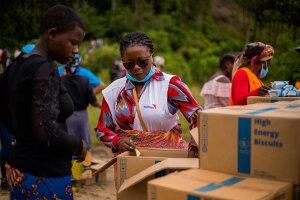
WFP brings life-saving food and nutrition assistance to people trapped or displaced by fighting, wherever they are. With the help of local partners, we reach those in need even in the most remote areas, using all-terrain vehicles and dropping food from planes when all other avenues are closed.
WFP's food assistance can improve conditions for peace in conflict-affected areas, as recognized by the awarding of the Nobel Peace Prize to WFP in 2020.
Supporting peace
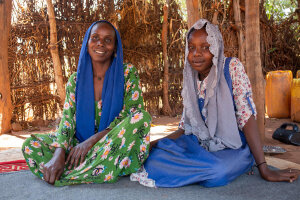
Preliminary findings from a joint research study with the Stockholm International Peace Research Institute indicated that WFP’s activities contributed to improving prospects for peace. We did this by improving access to contested natural resources, boosting social connections and resolving grievances within and between communities, while increasing opportunities and trust between people and governments through strengthening state accountability and service delivery. The study focused on El Salvador, Iraq, Kyrgyzstan and Mali.
Climate change
Anticipatory action
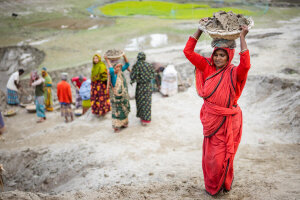
WFP’s Anticipatory Action programme uses early-warning systems to trigger humanitarian action before extreme weather events affect communities, allowing them to protect themselves, their homes and livestock, and to buy food and other essential items.
Climate-smart energy solutions

To ensure people can cook and eat food safely, WFP supports access to modern cooking appliances such as gas stoves, mini-gasifiers or electric pressure cookers. WFP also strives to empower smallholder farmers through the distribution of sustainable energy equipment and services that boost food production, processing and preservation.
Disasters
Logistics
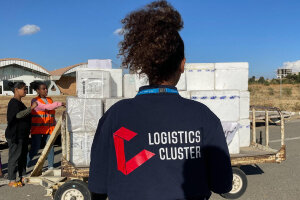
As the leader of the inter-agency Logistics Cluster, WFP helps coordinate the humanitarian logistics response and information management in response to large-scale disasters.
Connectivity
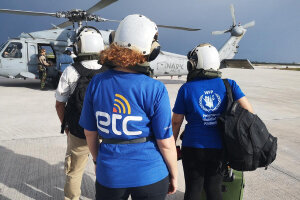
WFP leads the Emergency Telecommunications Cluster, which provides life-saving connectivity in emergency situations. WFP’s Fast IT and Telecommunications Emergency and Support Team of responders (FITTEST) establishes and restores communications and information technology networks.
Geospatial analyses
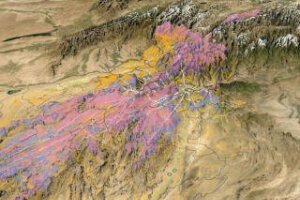
Targeted geospatial analyses show the immediate impact of natural disasters and allow for a faster response matched to needs. Our Geographic Information Systems tools such as ADAM (Automatic Disaster Analysis & Mapping) provide 24/7 mapping of earthquakes and tropical cyclones.
Inequality
Food assistance for assets
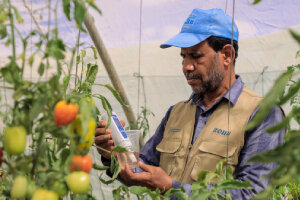
WFP’s Food Assistance for Assets programme involves people working on community projects such as restoring unproductive land, in return for cash or food. The private sector-focused Farm to Market Alliance connects smallholders to markets and helps them diversify their crops and increase their business potential.
Cash transfers
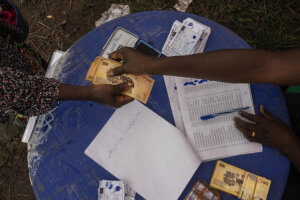
Where markets and financial systems are functioning, WFP provides cash assistance. Whether in the form of banknotes, vouchers, debit cards, e-money or mobile money, this allows people to make choices that improve their food security and nutrition, while injecting cash into the local economy.
Social safety nets

WFP supports governments in strengthening the social safety nets they have in place to protect their people from poverty, inequality and hunger. School meals for example are one of the largest safety nets across the world. We also work to enhance the ability of these systems to respond to shocks such as disasters or mass population displacements.
Food loss
Reducing post-harvest losses
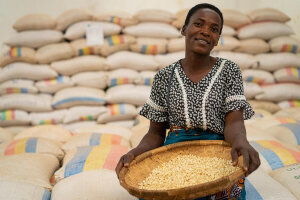
WFP teaches smallholder farmers how to use improved post-harvest handling methods, combined with simple but effective hermetic storage equipment to protect crops against insects, rodents, mould and moisture.
